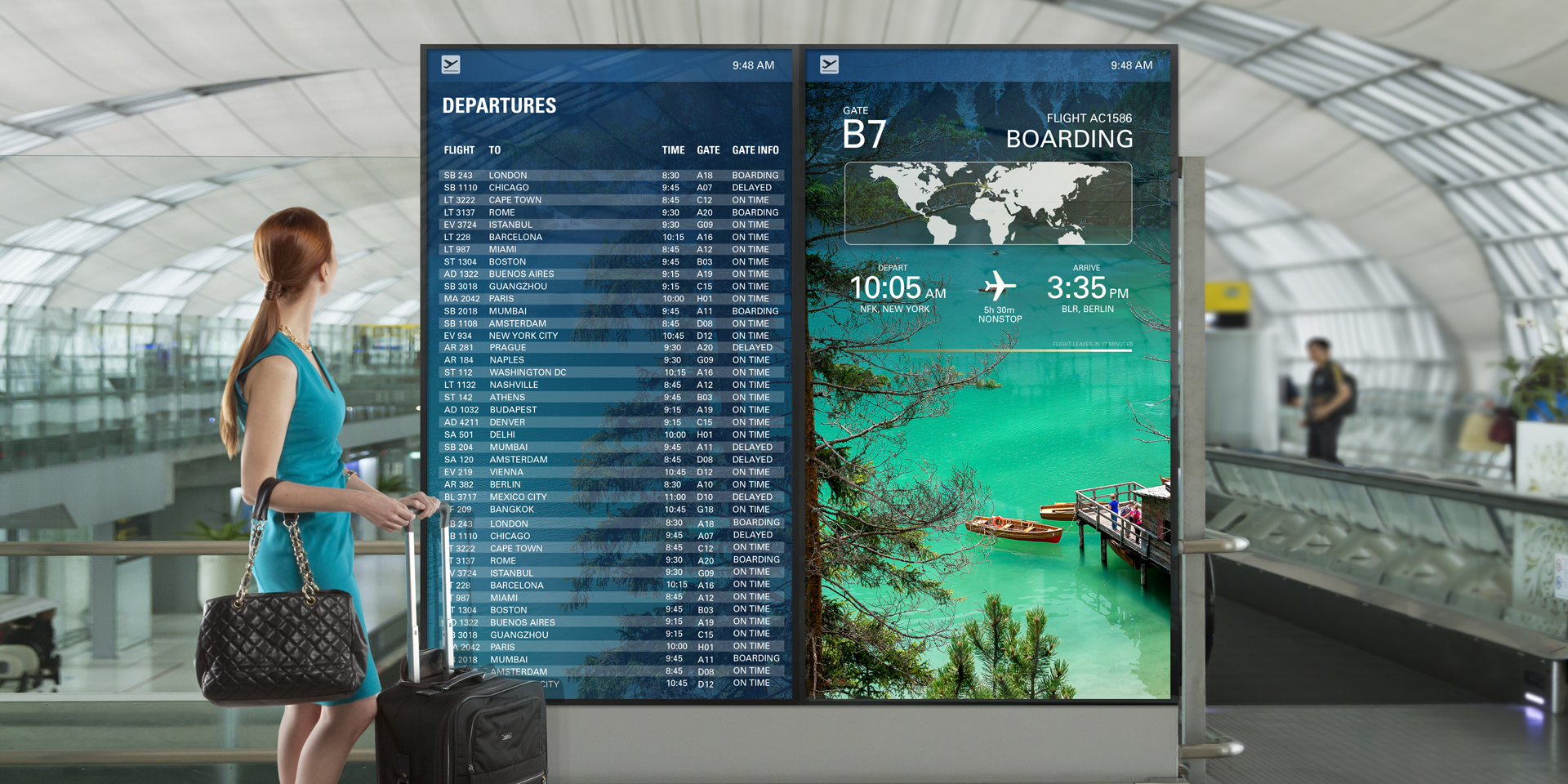This is part two of our look at the why and how of a content management system (CMS) for digital signage. Read part one to learn all the ways a CMS can benefit your business’s display strategy.
There are almost infinite content management systems on the market today — and more on the way. They range from raw startups to software representing decades of development and refinement. Some are general platforms that service a wide variety of use cases, while others specialize according to industry, be it food services, higher education or retail banking.
Many CMS products are now cloud-based, too, with multiple end users subscribing to a service and accessing shared servers and databases. This brings tremendous opportunity and versatility to growing and managing a digital signage network, often from a single device, even a smartphone.
For small businesses, sifting through the vast array of digital signage software options and choosing the best one for their particular needs can quickly become overwhelming. However, a bit of guidance can get them closer to their goals, starting with consideration of these five key factors:
1. Content types and scale
The biggest factor in choosing a CMS is what will be on the screen. That’s why end users should first develop a clear vision of their display network’s purpose and objectives — as well as the type, tone, volume and breadth of digital display content. A platform designed for a healthcare setting, for instance, may not suit a retail one. Or a video-centric platform may not work well for a data-driven network that will change messaging using HTML5. Even if a particular platform is incredibly user-friendly, it may be time-consuming if it doesn’t offer efficient scheduling. Without this clarity, an end user might invest in a robust, powerful, all-in-one CMS, only to learn that just a fraction of the system’s capabilities are necessary to manage their digital display network.
Digital signage content management made easy
Get your complete guide to configuring and tailoring real-time messaging using an integrated CMS. Download Now
2. Operating system
Traditional content management systems are hosted and managed on the premises by the end user’s IT staff. However, cloud-based software as a service (SaaS) systems have become incredibly popular for small businesses, as they outsource the system and some operating tasks, like scheduling and monitoring, to a digital signage cloud server. The flexibility and scalability this customization brings is why many small businesses opt for SaaS. Samsung VXT is a CMS that goes even further by using a cloud-native system, which breaks down the functionalities into smaller microservices, allowing smoother operations and stronger integrity.
3. Integration
To benefit from a network that uses real-time data and integrates with other business systems, end users need an application programming interface built into the CMS. This is simply a “handshake” between different digital systems. For example, key performance indicators from your manufacturing system could be linked to your signage network so that these metrics are automatically updated — and displayed — on digital signs throughout your production area.
4. Security
Security is a top priority in the digital age, as businesses in every industry are seeing a spike in cyberattacks. Teams in the federal government, healthcare and enterprise industries constantly manage confidential information, so their display network and CMS must be as secure as possible. In creating the VXT CMS, Samsung specifically pursued the highest protection standards. In fact, Samsung VXT became the world’s first digital signage solution to earn ISO 27701 certification — the leading global standard for data privacy management.
5. Budget
CMS software comes with various payment arrangements, which can help it fit small business budgets. Some versions are free and open-source, while others offer “freemium” services that provide core functionality at no charge but charge fees for broader or full features. Cloud-based systems tend to charge by the device per month, similar to wireless phone plans. On-premise systems usually require front-loaded, one-time costs, which can work better if the system is funded as a capital cost, not an ongoing operating expense.
The right questions for the best outcome
Choosing the right digital display software can be daunting. But with careful planning, clear vision and smart questions, success is likely to follow. Start by asking the following:
- Why are we considering a digital signage network?
- What are our objectives?
- How will we measure success?
- What is the scale of content we need to create, manage and broadcast?
- What will the content look like, how much will be needed, and how will it be produced?
- How many displays are there, and where are they?
- Which department will be responsible for content management? Do they have the necessary resources and budget?
- How do we keep all stakeholders and operators on the same page?
That last question is particularly important. The most effective and successful digital signage networks start with all stakeholders involved and in sync, with regular updates to keep everyone moving forward in the same direction and engaged in the process. Orphaned networks — with little buy-in or support from other departments — usually struggle and see little return on investment.
On the other hand, when the right software satisfies a small business’s needs, the digital displays it powers come to life as never before, generating new heights of traffic, conversion, brand loyalty — and profit.
Learn more about how the right CMS can help drive revenue for small businesses. Also see how Samsung VXT seamlessly bridged online and in-person commerce with Samsung displays for one company in this case study.






